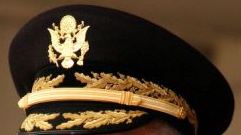
Twenty-some odd years ago, I had an opportunity to listen to Colin Powell speak. The event was small enough and I was senior enough that we had a useful conversation after his talk. The question I had was “how can you benefit from the experts working for you without some understanding of what they actually know and do?â€
Secretary Powell’s response was that you had to rely on your ability to judge people on a human level and trust that the enterprise you were part of was able to maintain a level of quality in how it recruited, developed, and advanced its experts. I wasn’t happy with his answer then and I’ve only become more unhappy since.
In most enterprises, for most of their history, the nature of work changed slowly. In Powell’s case his job was the same from the time he was a young 2nd lieutenant until he was Chairman of the Joint Chiefs of Staff; defend the U.S. against the threat posed by the Soviet Union. Only the scope changed.
That world was gone when we had the conversation twenty years ago. How do you manage a sales force using Salesforce when your selling days were built around a Rolodex and a DayPlanner? How does experience interpreting focus group results prepare you to extract insight from clickstream data? Pick your domain and the flood of new knowledge obsoletes old technique and overwhelms your capacity to evaluate results on the basis of merit.
There’s a dilemma here. You can’t manage what you don’t know. You can’t know everything you need to know. What you need to know changes faster than you can keep up.
Organizations exist to solve problems that exceed the capacity of any individual. We tend to think of that as a hierarchical process. An entrepreneur hires people to carry out their vision and design. Those people are there to execute work on behalf of the entrepreneur but the implicit assumption is that the entrepreneur could do all the tasks given sufficient time.
This was Colin Powell’s world. He might not know all the details of his subordinates work but he could. He was willing to trust their recommendations because he trusted the system. What if he can’t understand the recommendations? Or the alternatives?
The military sidesteps this problem with a useful workaround—commander’s intent. Commanders share the reasoning and goals being their orders. That allows subordinates to make local decisions applying their expertise to accomplish “commander’s intent†even if that might mean ignoring or contradicting the specifics of the commander’s orders.
In our expertise saturated environment, we need to create a bilateral form of commander’s intent. Knowledge intensive work in a volatile environment comes with the requirement to teach others how to understand and make sense of your work.
“Trust me†is not an option in either direction. Success depends on getting meaningful conversation to take place about the competing claims of all the stakeholders.
Contributing to this conversation places different demands depending on your role.
If you are an expert, you must understand the organizational decisions your expertise bears on. You must then be able to articulate the assumptions and limitations that constrain your options and your recommendations. The A/B testing of copy on your e-commerce site tells you nothing about the people who never visit your site.
If you are a leader, your goals need to include sharing the reasoning behind the answers you seek. In fact, you ought to stop thinking of experts as the people who provide answers. In time-stressed settings, it is always tempting to seek focus and clarity by seeking to confirm your intuitions. Executives ask for answers to their immediate problems. The counterintuitive yet more useful strategy in volatile environments is to collaborate with your experts to articulate and explore questions you have not thought to ask.
Best Engineering College in North India Punjab
Thanks for sharing this nice information.